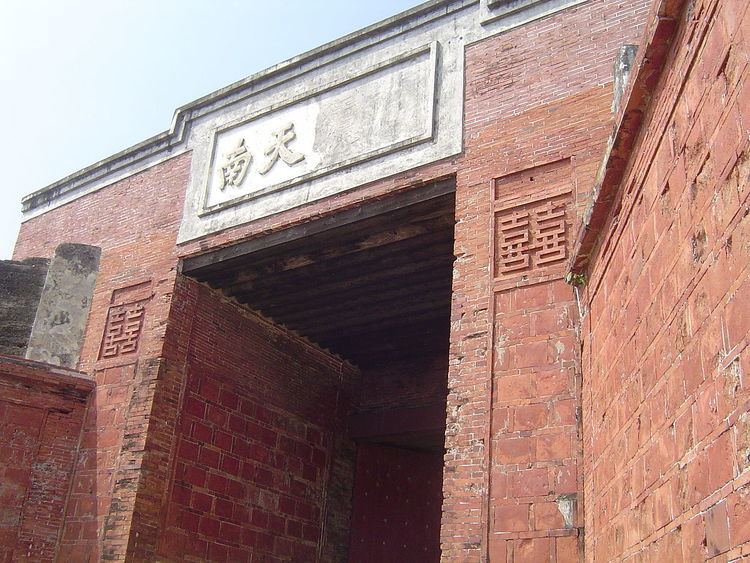Phone +886 7 222 5136 | ||
 | ||
Hours Open today · Open 24 hoursSundayOpen 24 hoursMondayOpen 24 hoursTuesdayOpen 24 hoursWednesdayOpen 24 hoursThursdayOpen 24 hoursFridayOpen 24 hoursSaturdayOpen 24 hours Similar Kaohsiung Lighthouse, North Gate of Xiong Town, Chi Jin Mazu Temple, Cijin Star Tunnel, Former British Consulat | ||
Cihou fort or cihou battery in kaohsiung taiwan
Cihou Fort or Cihou Battery (Chinese: 旗後砲臺; Hanyu Pinyin: Qíhou Pàotái; Tongyong Pinyin: Cíhòu Pàotái; Pe̍h-ōe-jī: Kî-āu Phàu-tâi) is a historic fort in Cijin District, Kaohsiung, Taiwan, formerly guarding northern entrance to Kaohsiung Harbor.
Contents
History
The first fortifications were built in 1720 when Taiwan was ruled by the Manchu-led Qing Empire of China. After Japanese expedition in 1874, the Qing authorities constructed a modern fort, which in 1880 had new Armstrong's guns installed. It played no part in the Sino-French War; the fighting in Taiwan took place around Keelung and during blockade French ships did not approach the port.
Taiwan was ceded to Japan according to the Treaty of Shimonoseki in the aftermath of the first Sino-Japanese war. The local troops, however, fought on. On 12 October 1895, escadre commanded by admiral Arichi Shinanojo (cruisers Yoshino, Naniwa, Akitsushima, Yaeyama, Saien (ex Chinese Jiyuan, captured in Weihaiwei) and corvette Hiei) arrived at Takow (modern-day Kaohsiung) and prompted the foreigners to evacuate, as they would conduct the attack on the next day. The foreigners boarded gunboat HMS Tweed and two tugs and withdrew (only to return once the fight was over). At 7 am, 13 October, Japanese ships "opened fire on the Takow forts at a range of about 6,000 yards. For the first half-hour, the forts responded, but after this their guns were silent...The forts fired twenty four rounds, the best shot being from the 8-inch B.L. Armstrong guns in Apes' Hill fort, which struck the water about 500 yards from the Naniwa Kan." The Japanese troops seized the forts in early afternoon, suffering no casualties (4 Chinese soldiers were killed).
During the Japanese era the fort was not used.
After World War II the hill was fortified by Chinese army: light gun and machine gun nests cut in the rock can still be found there.
Construction
Planned by British engineer, H. W. Harwood, the fort consists of three parts:
Of the 19th-century fortification at the foot of the hill, only remainders are still visible.
